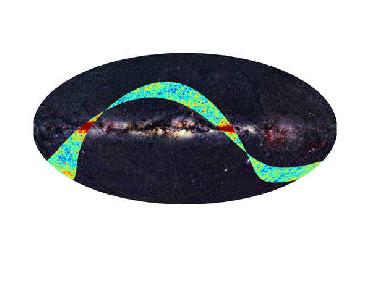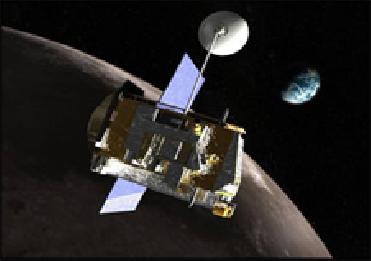
The microwave strip observed by Planck (multi-coloured curve) is superimposed on a visible-light image of the sky, which is dominated by the disc of our Milky Way galaxy. Image Credit: ESA/LFI/HFI Consortia/Axel Mellinger
LONDON (PTI) The Planck observatory, which was sent into space to record the origins of the universe, has beamed back first images of the fall out after the Big Bang.
According to the 'New Scientist', four months after it was launched into space, the Planck telescope has obtained its first peek at the afterglow of the Big Bang, revealing it in unprecedented detail.
The European Space Agency spacecraft was launched into space in May. It's observing the glow of hot gas from 380,000 years after Big Bang, called the cosmic microwave background.
Now, the Planck team has released the probe's first image, an observational strip covering about five per cent of the sky. Slight variations in temperature from place to place in the early universe give the image its mottled appearance.
"With a few per cent of the data in, you can see it is working well and delivering good stuff," team member George Efstathiou of the University of Cambridge said.
The spacecraft has an operational life of 15 months, which is enough to survey the whole sky twice over, although a mission extension of one year is possible. It is named after the 20th-century German physicist Max Planck, founder of the quantum theory.
Planck is expected to provide the most detailed all-sky map of the cosmic microwave background yet, improving on the best current map, obtained by NASA's Wilkinson Microwave Anisotropy Probe (WMAP), which launched in 2001, the report said.
 Previous Article
Previous Article Next Article
Next Article













The Indian Air Force, in its flight trials evaluation report submitted before the Defence Ministry l..
view articleAn insight into the Medium Multi-Role Combat Aircraft competition...
view articleSky enthusiasts can now spot the International Space Station (ISS) commanded by Indian-American astr..
view article